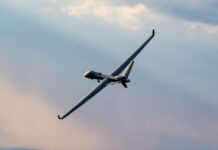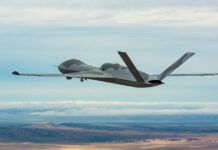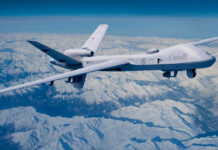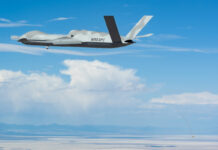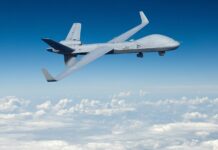US Air Force Special Operations Command (AFSOC) has become the first US customer for the MQ-9B SkyGuardian unmanned aerial vehicle (UAV) made by General Atomics Aeronautical Systems Inc (GA-ASI), the company announced on 6 March 2023.
GA-ASI noted that three MQ-9Bs had been ordered, but did not disclose the contract value.
The company did, however, explain that the MQ-9Bs “will feature a key role in developing AFSOC’s new Adaptive Airborne Enterprise (A2E) concept, which envisions AFSOC projecting air power for special operations forces from beyond the horizon, using a family of large [UAVs] and expendable, small [UAVs] from permissive to denied environments”.
In response to questions from ESD, Lieutenant Colonel Becky Heyse, Director of Public Affairs for AFSOC, replied on 6 March, “As part of A2E, AFSOC expects to take possession of its first MQ-9B, funded by Congressional add, by the end of the calendar year. The MQ-9Bs currently slated for AFSOC will not be used operationally. They will be used to rapidly pathfind A2E concepts and technologies, planned to include [small unmanned aerial systems] and autonomy integration, beginning in calendar year 2024.”
Explaining the rationale behind the MQ-9B purchase and the A2E initiative in general, Lt Col Heyse told ESD that GA-ASI’s MQ-9A Reaper UAV “has served as the centerpiece of [US Special Operations Command’s intelligence, surveillance, and reconnaissance enterprise, providing battlefield awareness and precision strike capabilities tailored to counter violent extremist organisations. “However,” she said, “in contested or denied environments AFSOC is shifting from multiple operators controlling a single MQ-9A to a single air commando directing a family of systems. Adaptive Airborne Enterprise is a concept that marks the evolution from exclusively using the MQ-9 platform for intelligence gathering and strike capabilities to using a family of uncrewed and optionally crewed systems to achieve battlefield effects. MQ-9 units will leverage multiple platforms and incorporate autonomy and eventually artificial intelligence technologies to deliver capabilities to special operations forces, the air force, and the joint force across the spectrum of operations. A2E will increase the number of platforms AFSOC operators can manage by an order of magnitude and, through those systems, cover more terrain and prosecute more target across the spectrum of operating environments.”
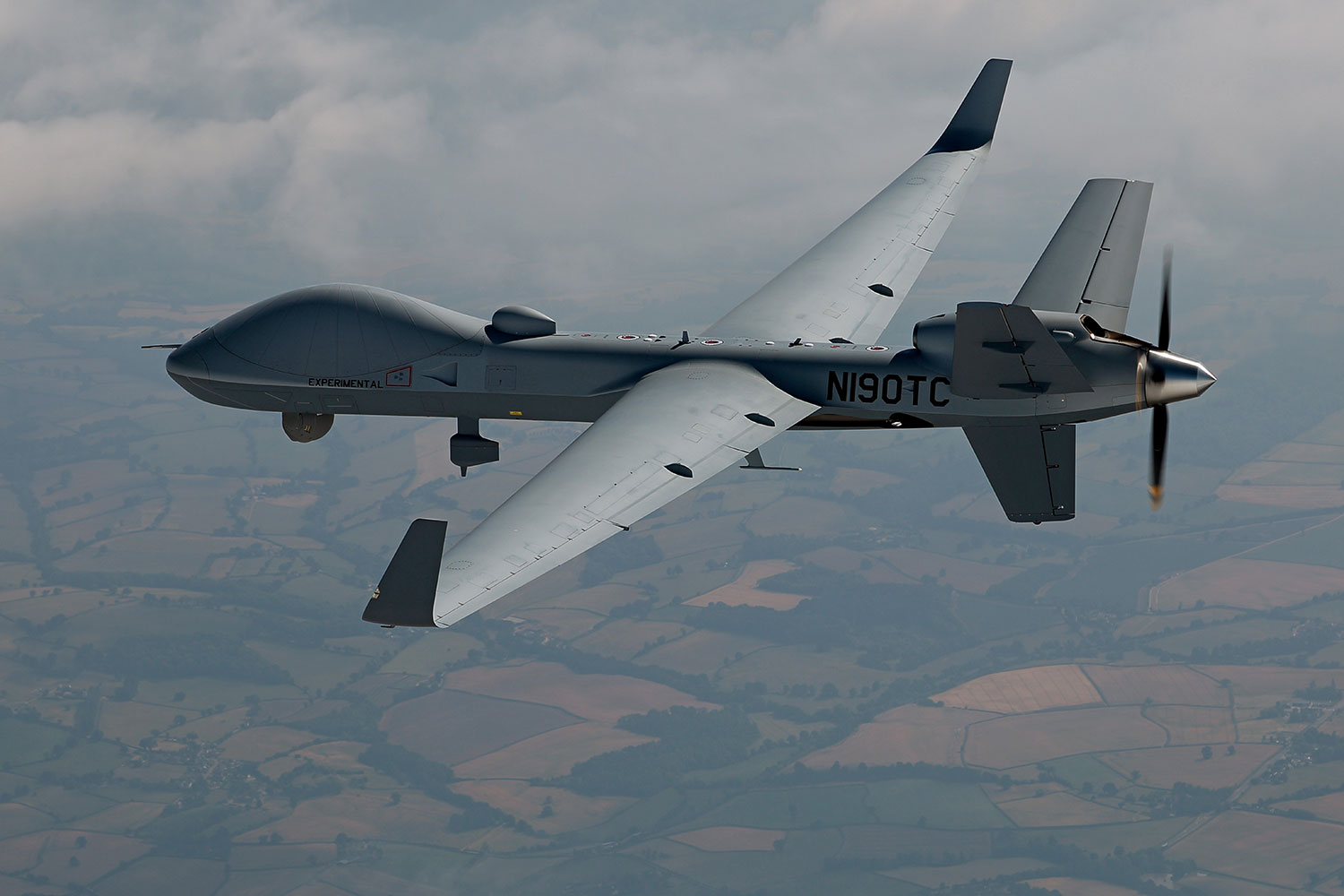
Described as the world’s first UAV certified to fly in civil airspace, the MQ-9B SkyGuardian/SeaGuardian has a larger wingspan than its MQ-9A Reaper predecessor (24 m compared to the Reaper’s 20 m) and can fly over the horizon via satellite control for around 40 hours in all types of weather.
All MQ-9B aircraft feature the Lynx Ku-band multi-mode radar, an advanced electro-optical/infrared sensor, dual satellite command and control, automatic take-off and landing, and signals intelligence capabilities. The aircraft additionally features nine external hardpoints (four on each wing and one on the centreline) that can carry up to 2,155 kg of weapons/additional sensors.
While the USAF has flown the GA-ASI MQ-9A Reaper for more than 14 years, operating more than 40 aircraft in harsh environments around the world, according to the company, the first adopters of the MQ-9B have been foreign customers. The UK Ministry of Defence (MoD) ordered its first three of the type for its Protector programme in July 2020 and then ordered an additional 13 in July 2021, while the Belgian MoD ordered four in August 2020. Meanwhile, the Japan Coast Guard began flight operations using an MQ-9B in October 2022, while the Japan Maritime Self-Defense Force also recently selected for the type for its Medium-Altitude, Long-Endurance Remotely Piloted Air System Trial Operation Project, which begins in April.
Peter Felstead




